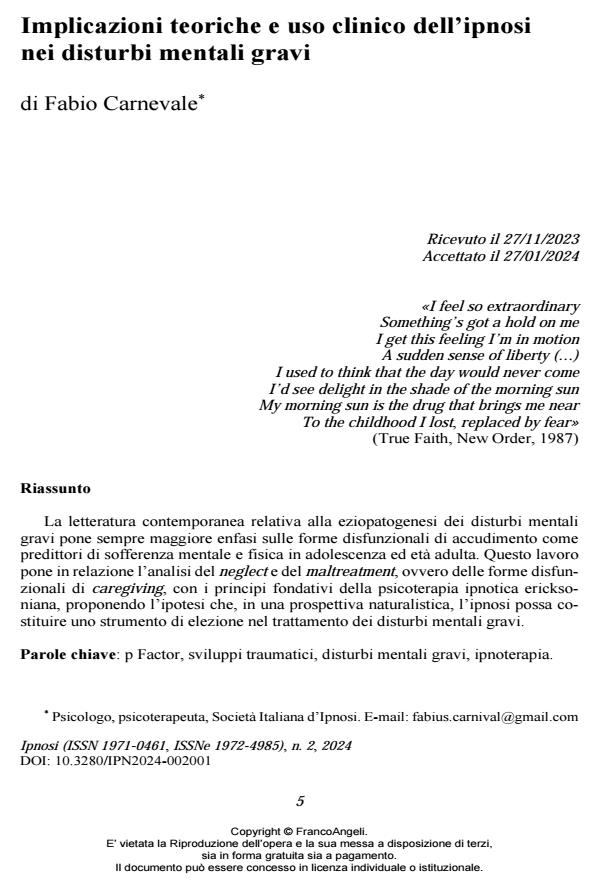Theoretical implications and clinical use of hypnosis in severe mental disorders
Journal title IPNOSI
Author/s Fabio Carnevale
Publishing Year 2025 Issue 2024/2
Language Italian Pages 19 P. 5-23 File size 210 KB
DOI 10.3280/IPN2024-002001
DOI is like a bar code for intellectual property: to have more infomation
click here
Below, you can see the article first page
If you want to buy this article in PDF format, you can do it, following the instructions to buy download credits

FrancoAngeli is member of Publishers International Linking Association, Inc (PILA), a not-for-profit association which run the CrossRef service enabling links to and from online scholarly content.
Contemporary literature on the aetiopathogenesis of severe mental disorders emphasizes dysfunctional forms of caregiving as predictors of psychological and physical suffering in adolescence and adulthood. This paper relates the analysis of neglect and maltreatment, i.e., dysfunctional forms of caregiving, with the founding principles of Ericksonian hypnotic psychotherapy, proposing the hypothesis that, from a naturalistic perspective, hypnosis may be a tool of choice in treating severe mental disorders.
Keywords: p Factor, traumatic developments, severe mental disorders, hypnotherapy.
Fabio Carnevale, Implicazioni teoriche e uso clinico dell’ipnosi nei disturbi mentali gravi in "IPNOSI" 2/2024, pp 5-23, DOI: 10.3280/IPN2024-002001